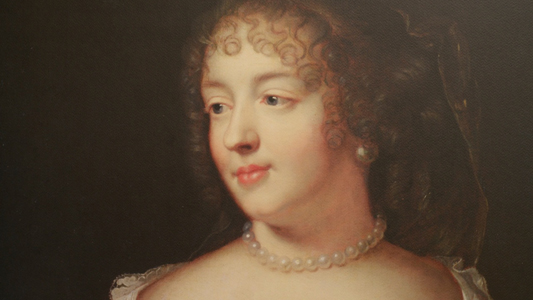|
||||
The Marquise de Sevigne
Marie de Chantal was born into a wealthy French family in 1626. Orphaned at age seven, her grandparents died when she was ten. A meeting of her extended family was held, and instead of sending her to a convent (the usual outcome) she was given into the care of her uncle, the Abbe de Coulanges.
Although women of her class were expected only to sew and be decorative, the Abbe decided to provide the bright and vivacious Marie with a boy’s education. Thus, she became fluent in several languages (later reading Virgil in the original Latin); and studied philosophy, history, and mathematics as well as music and art.
When introduced at the court of Louis XIV at the age of 18, she was quickly declared the most beautiful woman in Paris and the most brilliant woman in Paris. She often danced with the king and he even considered marrying her.
Although a suitable match was not readily found, she was married at last to the Marquis de Sevigne. She gave birth to a girl and a boy before her husband was killed in a duel over his mistress. Rather than remarry or join a convent (again, the usual outcome), she decided to live alone and raise her children. Her charm and beauty prompted many men to court her—one man called 60 times!—but she deftly turned her suitors into friends and there was never a breath of scandal for the rest of her long life.
Of the many letters for which she became famous even in her own lifetime, the great majority that have been published and republished over the intervening centuries were those saved by her daughter, Francoise-Marguerite, to whom she wrote often. Her daughter’s eminent husband was appointed governor-general of faraway Provence, and the rigors and dangers of travel were such that the Marquise and her daughter did not see one another for years at a time. Letters were their lifeline.
She wrote about everything: her health, her gardening, politics, affairs at court, gossip, philosophy, wars and uprisings, famine and plague, and the extended trial of her close friend Nicolas Fouquet.
The Marquise lived to be 70 and to see her grandchildren grow up. She died of a fever while attending to her sick daughter. Her granddaughter Pauline approved the first publication of some of the Marquise’s letters, carefully selected and edited for the general public. The total extant letters comprise 10 volumes and are a pillar of French literature, providing remarkable insight into aristocratic life in 17th Century France. Her homes are now museums, and there are statues of her in many places in France.
As revered as she is in France, she is not well known elsewhere, and only modest collections of the letters have been translated into English.

